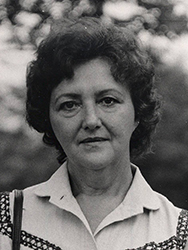Marcinková Milica

1934, Komjatice
Milica Marcink studied Architecture in Bratislava, and immediately after graduation in 1959 she started to work in Stavoprojekt, Bratislava. Her first tasks were from the field of education. The Devín Primary School (1961 - 1963) and the Children's Diagnostic Institute in Bratislava (1963-1967) were characterized by the small scale, spatial diversity and the interconnection of interiors with the exterior, which documented Marcinková's Scandinavian experience. A similar approach was applied by Marcinková to the winning design of a elementary campus school, which she proposed together with her husband, Marian Marcinko, in 1960 in a national competition. Milica Marcinková's proposals served at the time as a substantial contribution to tendency to reform a school from a conservative institution to a more open educational system.
At the turn of the sixties and seventies Marcinková spent seven years at the ministry where she considered the architectural designs of buildings for education and culture. In 1972, she joined the Project Institute of Culture. There, until the nineties of the 20th century, she devoted herself to designing cultural facilities and restoring historic monuments. The most important work of this period is the House of Culture in Bojnice (1975 - 1981, cooperation of Eleonora Sopková), for which she was awarded the ZSA Prize in 1981. Two years later she also exhibited this work on the Interarch 1983 World Exposition in Sofia, Bulgaria.
